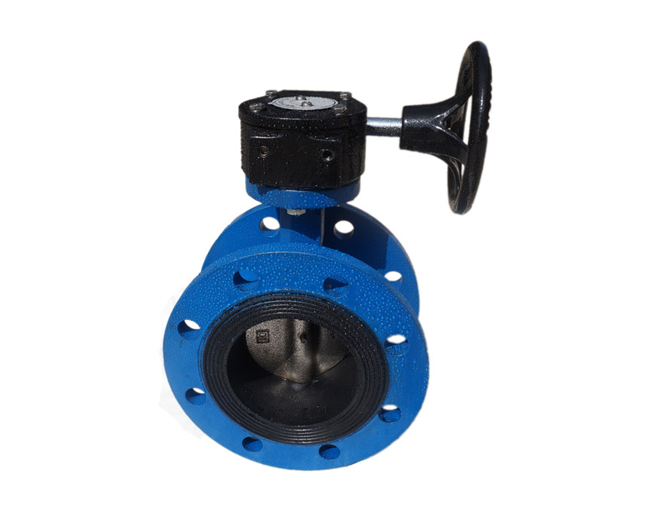The butterfly valve, as the name implies, its key components are like a butterfly, turning freely in the wind. The disc of the butterfly valve is a disc, which rotates around an axis in the valve seat. The size of the rotation angle is the opening and closing degree of the valve.
The butterfly valve is a valve that opens and closes according to the rotation of the valve stem while driving the disc plate to rotate. In the cylindrical passage of the butterfly valve body, the disc-shaped butterfly plate rotates around the axis, mainly by rotating the disc plate 90° for flow control, When the disc reaches 90°, the valve is in a fully open state, and the angle of the disc can be changed to adjust the medium flow. It is generally installed in the diameter direction of the pipe. The butterfly valve and the valve stem have no locking ability. In order to effectively adjust the flow, a worm gear reducer is required. The butterfly valve with a worm gear reducer not only makes the butterfly valve self-locking but also changes the operating performance of the butterfly valve and adjusts the medium flow more accurately.
1. When the butterfly valve is fully opened, it has a small flow resistance. When the opening is between about 15° and 70°, it can perform sensitive flow control. Therefore, the application of butterfly valves is very common in the field of large-diameter adjustment. Since the movement of the butterfly plate of the butterfly valve is wiping, most butterfly valves can be used for media with suspended solid particles. Depending on the strength of the seal, it can also be used for powder and granular media.

2. The butterfly valve is suitable for flow adjustment. Since the pressure loss of the butterfly valve in the pipe is relatively large, about three times that of the gate valve when selecting the butterfly valve, the influence of the pressure loss of the pipeline system should be fully considered, and the strength of the butterfly plate withstand the pressure of the pipeline medium when it is closed should also be considered. In addition, it is necessary to consider the limitation of the working temperature of the elastic valve seat material at high temperatures.
3. The structural length and overall height of the butterfly valve are small, the opening and closing speed is faster, and it has good fluid control characteristics. The structural principle of the butterfly valve is most suitable for making large diameter valves. When the butterfly valve is required to control the flow, the most important thing is to correctly select the specifications and type of the butterfly valve so that it can work properly and effectively.
A Flanged concentric butterfly valve is a kind of center-lined flanged butterfly valve and is the most common butterfly valve. The butterfly valve lined with rubber lining has a central disc and an adhesive bushing. It has higher strength and better safety. Prosper Flow can manufacture ANSI B16.5, DIN 2501, BS 4504, GB 17241.6, JIS10K, and other double flange rubber-lined butterfly valves with flange ends according to AWWA C504 and EN593. If you want to get more information about good quality butterfly valves, please contact us.